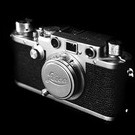for the members who've been around Leica for a long time
-
Recently Browsing 0 members
- No registered users viewing this page.
-
Similar Content
-
- 68 replies
- 3,118 views
-
- 3 replies
- 384 views
-
- 1 reply
- 252 views
-
- 6 replies
- 526 views
-
- 20 replies
- 1,010 views
-






Recommended Posts
Join the conversation
You can post now and register later. If you have an account, sign in now to post with your account.
Note: Your post will require moderator approval before it will be visible.